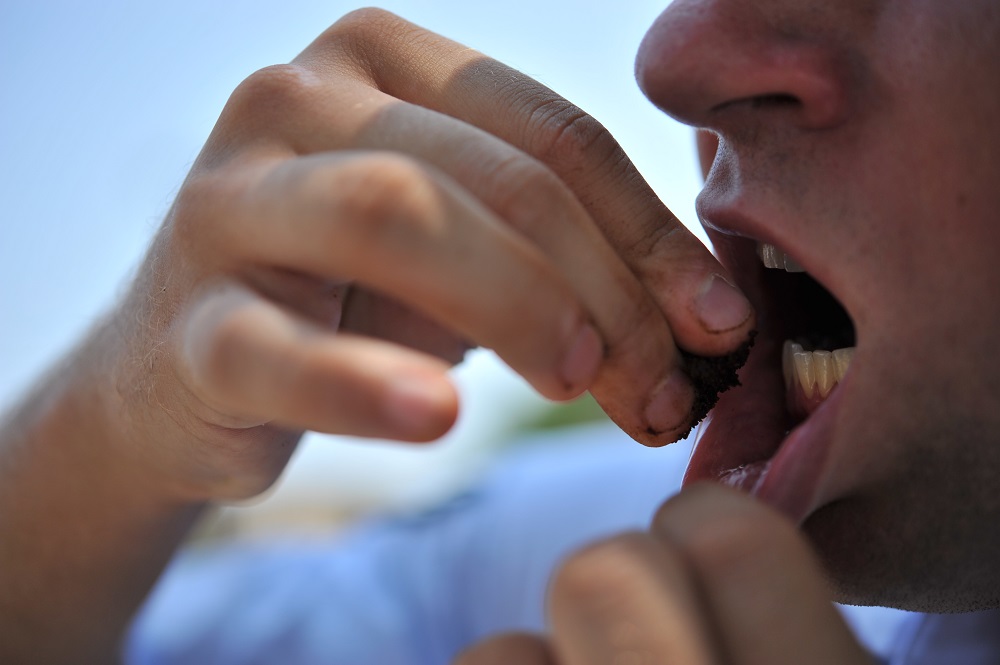International Classification of Diseases (ICD) Coding scheme, WHO case definitions and IARC. Oral cavity cancer is the 8th most frequent cancer in the world among males and 14th among females.
Written by Dr Sushma Sharma who is a Medical Practitioner and has a Masters in Dental surgery (Orthodontics and Dentofacial Orthopedics)

The scenario of Oral cancers is more dreadful in India and poses a significant public health problem owing to increased ignorance, high illiteracy rate, underprivileged strata who don’t have adequate access to trained providers and limited health services.
Oral cancers miss diagnosis at early stages and usually diagnosed at more advanced stages which result in low treatment outcomes and a considerable rise in treatment, may not be affordable to a large portion of the population. Earlier detection of oral cancer can reduce both, morbidity and mortality.
Oral Cancer Screening and Treatment
According to the American Dental Association (ADA), oral cancer screenings should be done every six months.
Oral cancer examinations by a dentist are quick, painless and crucial for detecting tissue changes in the mouth that might signal the beginning of cancer.
If any of the following symptoms mentioned below persist for more than two weeks, immediately consult your dentist.
Signs and Symptoms of Oral Cancer
Location of Oral Cancer
Mouth cancer can occur anywhere in the mouth, which includes the following:
- Lips tissue that lines lips and cheeks
- Front two-thirds of the tongue (the back third of the tongue, or base, is considered part of the oropharynx, or throat)
- Gums
- Area of the mouth underneath the tongue called the floor of the mouth
- Palate or roof of the mouth
1. Persistent mouth sore
A sore in the mouth that does not heal is the most common symptom of oral cancer.
2. Persistent mouth pain
Numbness, pain or tenderness anywhere in your mouth, including your tongue.
3. Swellings, lumps or thick patches anywhere in or around your mouth or throat
4. A white or red patch inside your mouth or lips
5. The feeling of a lump or object stuck in your throat
6. Swellings that make wearing dentures uncomfortable
7. Pain in one of your ears or but without any loss of hearing
8. Trouble moving your jaw or tongue, or problems with chewing, swallowing or speaking
9. Loose teeth with no apparent dental cause
10. A lingering sore throat or hoarseness.
11. Voice changes
12. Weight loss
13. Persistent bad breath
Risk factors for Oral Cancer
A risk factor is a characteristic or behaviour that increases one’s possibility of disease.
1. Tobacco of any kind
Tobacco products are linked with many cancers including bladder, pharyngeal, mouth, pancreatic, kidney, stomach, laryngeal, and oesophagal cancers.
Cigarettes, cigars, pipes and smokeless tobacco – gutka, paan, then increase your risk of oral cancer. In fact, the Mouth Cancer Foundation reports 90 per cent of those with oral cancer to consume tobacco.
http://www.omilights.com/cigarette-smoking-is-injurious-to-health/
The World Health Organization (WHO) reports the worldwide death toll from tobacco use is 4 million annually. The death toll is expected to rise to 10 million per year by the 2020s or early 2030s, with 7 million deaths occurring in developing countries.
2. Alcohol
Alcohol abuse (when defined as more than 21 standard drinks in one week) is already the second largest risk factor for the development of oral cancer, the risk is even higher when using both tobacco and alcohol.
3. HPV
Infection with the sexually transmitted human papillomavirus (specifically the HPV 16 type) has been linked to a subset of oral cancers.
4. Age
Risk increases with age. Oral cancer most often occurs in people over the age of 40. Men are twice as likely to develop oral cancer than women. The American Cancer Society suggests that anyone who is at high risk or over 40 years old should have an Oral Cancer examination once a year.
5. Gender
Oral cancer and oropharyngeal cancer are twice as common in men as in women.
6. Sun Exposure
People who have jobs working outside are more prone to developing lip cancer and should use UV protection.
7. Diet
A diet low in fruits and vegetables may play a role in oral cancer development.
8. Family or personal history
Previous diagnosis of oral cancer or family history of oral or other types of cancer
Please connect with Dr Sushma Sharma on Linkedin for any queries:
https://www.linkedin.com/in/dr-sushma-dhiman-4a64b0101/
Frequently Asked Questions on Dental Health
1. Oral Cancer- Early Signs and Risk Factors
2. Midline Diastema – Causes and Treatment Options
3. 5 Dental Treatments to Enhance Your Smile
4. Importance of Dental Visit for Infants
5. Dental Tourism in India – Advantages and Disadvantage
6. Can Eating Disorders effect Dental Health?
7. How to Reverse Tooth Decay and Dental Caries with Diet?
8. Complete Information on Mouthwash for Dental Health
9. Dental Myths and Facts in Society-by Dr. Sushma Sharma(Dhiman)
10. Oil Pulling-Benefits, Tips and Methods for Dental Health
11. 4 Great Tips to Help You with Your Smile Makeover
12. What Are The Early Signs Of Gum Disease?
13. 7 Ways to Treat Gapped Teeth Effectively
14. Should I Go to the Dentist When I’m Sick?
15. Habits Start Young: 4 Ways to Implement a Healthy Routine for Your Kids
16. Receding Gums: Causes, Symptoms, and How to Treat Them
17. How to Get Your Biggest, Brightest, and Whitest Smile
18. How Menopause affects Oral Health?
19. Tongue tie in children-know all about the symptoms and cure
20. How to Deal with Black Spaces in your Teeth
21. The Effects of Enlarged Tonsils on Dentition
22. 8 Amazing Benefits Of Baking Soda And Lemon for teeth
23. What Should we Eat and Avoid with Braces?
23. 9 Traditions to Dispose of Lost Milk Teeth




